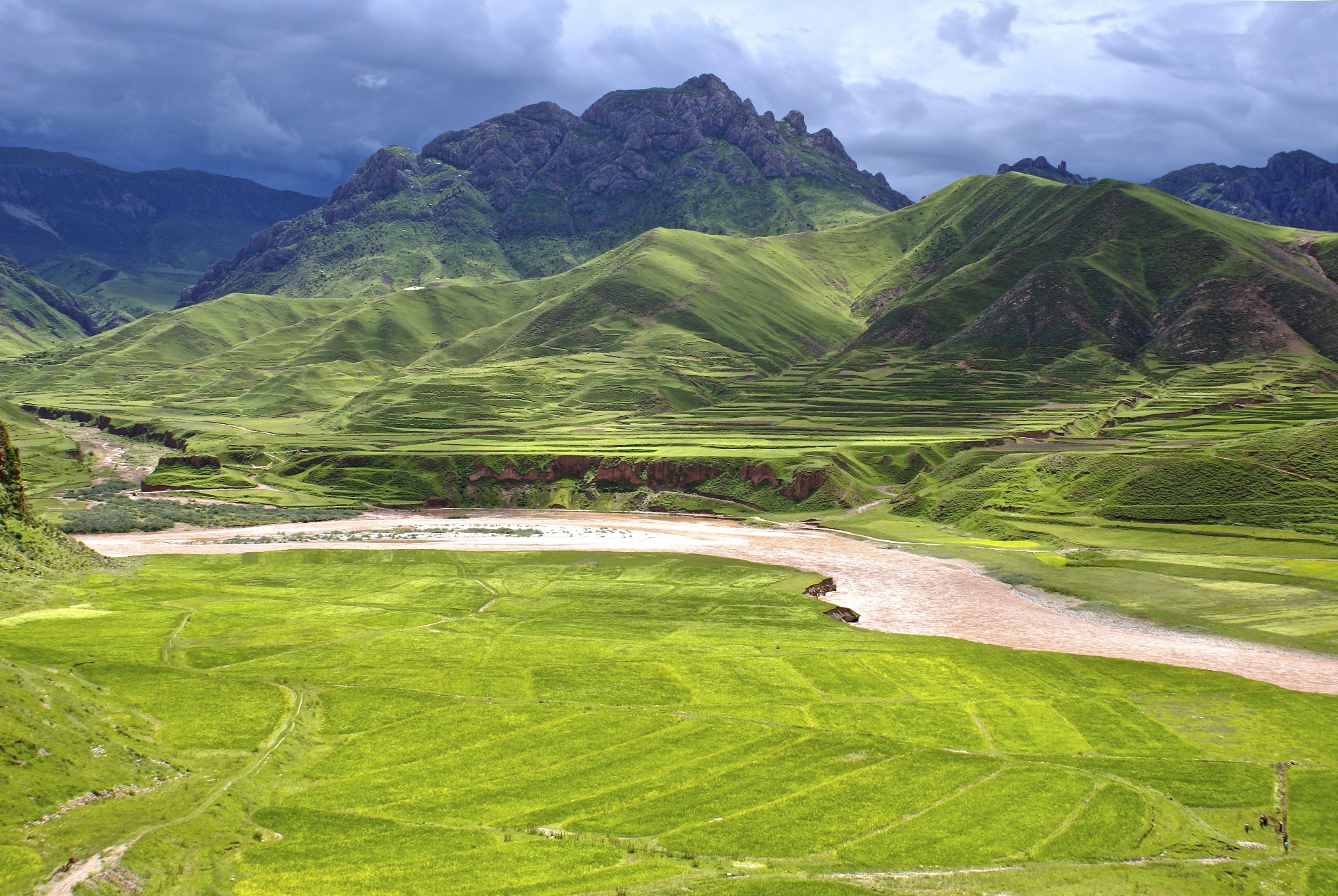Tibet is a low pressure area. We learned that as you go higher in altitude, the lower the air pressure. Tibet is a higher area, meaning lower air pressure, and thin atmosphere, or less air.
http://home.arcor.de/pedalglobal/pix/himalayacycling/tibet99/af02.jpg
Lets take a break shall we. The air is thin up hear. This is due to the thinner atmosphere in the higher altitudes.
Thermal Pressure is influenced by differences in temperature, warmer air is “lighter” than cooler air. One common occurrence in the Himalaya is what is called Diurnal Breezes.
http://www.atmos.umd.edu/~meto200/3_18_03_lecture_files/slide0003_image067.jpg
You can see in this diagram how the warm daytime air moves up the peaks, and the cool night air moves down the peaks.
When the land heats during the day, the air near the ground warms and rises, causing the air to move up the mountains, a breeze would blow towards the peak. At night, when the land cools, the air does as well, so it sinks to the ground. A breeze would be blowing from the peaks in this instance.
Wind is controlled by what is called the pressure gradient.
http://www.physicalgeography.net/fundamentals/images/thermal2.GIF
You can see how the pressure changes as you move from the high pressure area to the low pressure area, air always moves in this direction.
In other words, the amount of pressure in one area and its change to another area. What we see is that air travels from areas of high pressure to areas of low pressure, creating winds. Tibet is typically its windiest in the winter, when it is in between the high pressure inland, and the low pressure out at the sea. The seaward winds are the Winter Monsoon. During the summer, it swaps, the land is a low pressure area, and so the winds blow from the sea. This is the summer monsoon.
Climate
Climate is basically defined as the longterm temperature, precipitation and seasonal pattern of an area. The Tibetan Plateau is considered a Highland Climate area. This is an area that is characterized by high altitudes, as well as mountains. Much of the precipitation of Tibet comes from run off from the glaciers and snow in the Himalayan Mountains.
http://glacierchange.files.wordpress.com/2011/03/laigu-glacier.jpg
You can see the glacier in this Google satellite image. During the warmer months the glacier will melt a little and the run- off will bring moisture to the soils below.
As stated before, a majority of the precipitation in Tibet comes from the summer monsoon, which bring wet sea air, and the higher temperatures melt the snow. Tibet has an extremely high soil moisture content. A prime location for farming or grazing.
http://english.peopledaily.com.cn/200507/04/images/0702_B21.jpg
The soil is very green during the summer. Run off from the mountains, and the coming of the Summer Monsoon bring extreme amounts of precipitation. Look at how wet the ground is!














